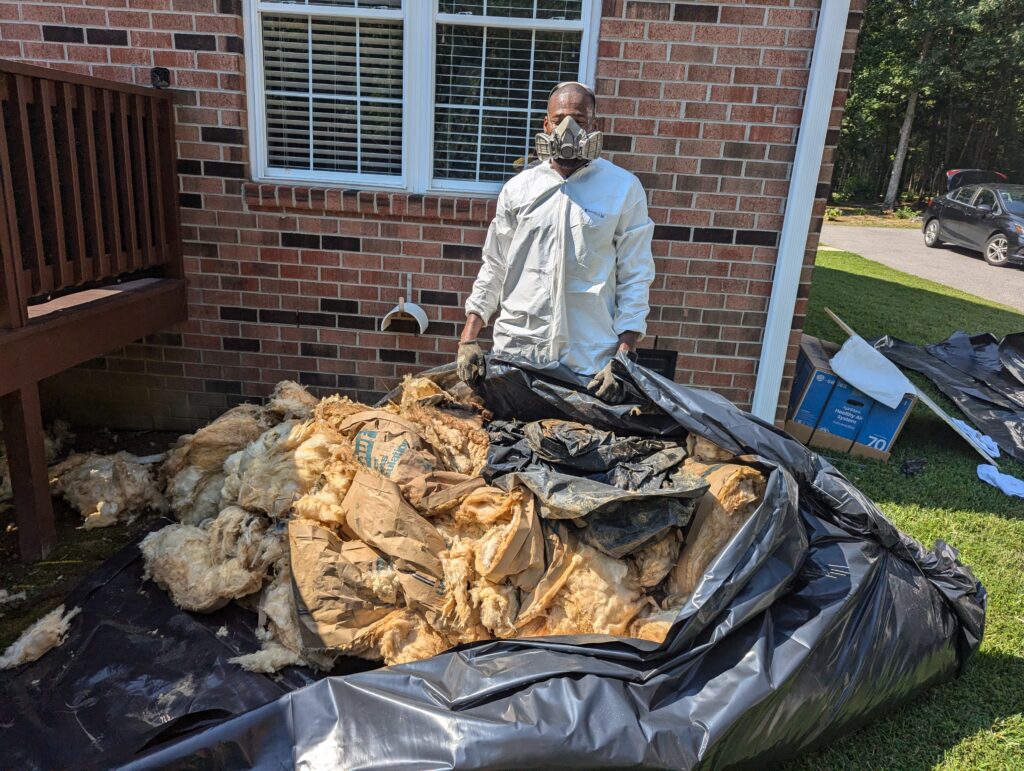Can Insulation Get Wet? And What Happens When It Does?
Insulation is an often overlooked component of an energy efficient home, but it is a critical step in creating a comfortable, safe, and clean environment. Insulation is designed to maintain even temperatures inside the home, as well as to discourage humidity from collecting in and around your home, which can lead to serious moisture control problems including mold. However, like any other material, insulation is at risk of moisture damage.
What are those risks? This article dives into answering these and other questions to assist you in preventing and addressing this issue.

Can Insulation Get Wet?
The short answer? Yes. Insulation can absolutely get wet. This can occur if there are leaks from a faulty roof and water gets into the attic space, or a leaking plumbing pipe inside the home. It can also happen if an appliance, such as a dishwasher or refrigerator leak excessively and water penetrates through the floorboards and into your crawl space.
Finally, we get a lot of rain in central Virginia and sometimes flooding occurs. Other extreme weather such as hurricanes can directly expose insulation to moisture.
What happens When Insulation Gets Wet?
Wet insulation can lead to all kinds of issues. First, insulation that is full of water loses its ability to do its job – control an even temperature inside your home. This leads to a serious negative impact on your home’s energy efficiency.
Second, it can have a reverse effect on its ability to keep moisture at bay. Instead, it can become an ideal host for mold and mildew to multiply which can trigger respiratory and allergy problems.
Third, wet insulation left untreated can actually weaken building materials and lead to a structural crisis. Finally, insulation forces your HVAC system to work harder which drives up energy bills.
How to Keep Insulation Dry?
Prevention is key to avoiding the negative and potentially catastrophic consequences of wet insulation. Let’s discuss ways to maintain a happy and healthy insulation environment. Make sure that you have adequate ventilation in your attic and crawl spaces.
Alternatively, we recommend creating a sealed crawl space that may include a sump pump, drain tile, a vapor barrier, and dehumidifier to create channels for moisture to exit.
Another helpful strategy is to seal any air leaks in your home. This includes around windows and doors as well as other areas where water might get in. If you find an existing leak, fix it quickly. This will minimize the impact on insulation and other parts of your home.
Finally, conduct regular inspections of your home’s insulation. Look specifically in your crawl space, your attics, and wall cavities.

What to Do When Insulation Gets Wet?
If you discover wet insulation, acting quickly can help save you long-term stress and damage to your home. First, identify the source of the moisture. If it’s coming from a leaky pipe, turn off water flow through that pipe. If it’s a rooftop leak, contact a roofing company to repair immediately and cover the affected area as soon as you see the issue.
The next step after cutting off the problem at the source is to dry the affected areas. Use fans, towels, and dehumidifiers to remove as much moisture as possible. As you do this, watch for mold and mildew growth on wood and insulation.
Finally, if you notice that your insulation is severely damaged, it may need to be replaced. Call Vance Insulation, and we’ll come assess the damage and make practical suggestions to take steps forward.
Here are some things to consider:
If you’re unsure about the extent of the damage or the best course of action, consult with a qualified insulation contractor. Vance Insulation has been in business for over 60 years and specializes in insulation and moisture control. You’ll also want to check your homeowner’s insurance policy to see if it covers water damage and insulation replacement. Implement preventive measures to avoid future water damage and maintain the efficiency of your insulation. This can involve crawl space moisture control, landscape grading, and perhaps replacing windows.
By understanding the risks associated with wet insulation and taking proactive steps, you can protect your home’s energy efficiency, indoor air quality, and overall structural integrity.

